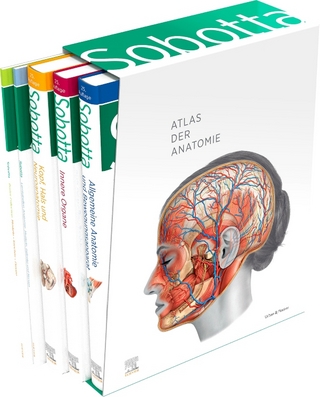
Atlas of the Human Brain
Academic Press Inc (Verlag)
978-0-12-821915-7 (ISBN)
- Noch nicht erschienen (ca. September 2025)
- Versandkostenfrei innerhalb Deutschlands
- Auch auf Rechnung
- Verfügbarkeit in der Filiale vor Ort prüfen
- Artikel merken
Professor Mai studied medicine in Freiburg, Germany, Vienna and UT Southwestern Medical School, Dallas, U.S.A. Student and Medical practices in Freiburg (Clinic for Neurosurgery), Berlin and Düsseldorf. Dissertation ("summa cum laude") and habilitation were awarded by the University of Düsseldorf: After a period as GP in private practice (Titisee-Neustadt) he became scientific assistant and senior assistant at the C. and O. Vogt-Institute for Brain Research, University of Düsseldorf (1972 - 1983) and Professor of Neuroanatomy at the Institute of Neuroanatomy, H.-Heine-University of Düsseldorf. He served as director of the Department of the Institute of Anatomy 1 until retirement in 2011. His main research interests are (i) the structural and molecular anatomy of the mammalian brain and (ii) expression patterns and regulation of terminal carbohydrates in development, cell activation and disease (III) operation planning in stereotactic neurosurgery. He works on a "Digital Brain Atlas for Planning and Interindividual Registration of Targets in Deep Brain Stimulation" and on a "Spatial Information Management Resource for the Human Brain". J. K. Mai has edited the catalogue of human brain sections from the Vogt collection; he is author and editor of several books, e.g. the awarded "Atlas of the Human Brain" (Academic Press/Elsevier, San Diego), "The Human Nervous System" (Academic Press/Elsevier, San Diego, Amsterdam, 3rd ed. 2012), Human Brain in Standard MNI Space: A Comprehensive Pocket Atlas (Academic Press/Elsevier, San Diego, 2017; with M. Majtanik), Funktionelle Anatomie für Zahnmediziner (Quintessenz, Berlin, 2nd. ed. 2008; Sensi Divini (ital., engl., ger, russ. eds). J. K. Mai is founder and CEO of MR-X-Brain GmbH. Milan Majtanik received his diploma in neuropsychology and training in neuroinformatics from the University of Bochum. He completed his diploma in mathematics and his PhD in psychology at the University of Düsseldorf. In his research at the Research Center Jülich he combined advanced analysis techniques in magnetoencephalography (synchronization tomography) with computational modelling in order to measure the impact of desynchronizing sensory stimulation on brain functions. His work on neural plasticity and desynchronizing neural stimulation provided framework for the developent of novel therapeutic techniques. He is currently focusing on the development of novel algorithms for high precision mapping and analysis of individual MRI scans. Professor Paxinos is the author of almost 50 books on the structure of the brain of humans and experimental animals, including The Rat Brain in Stereotaxic Coordinates, now in its 7th Edition, which is ranked by Thomson ISI as one of the 50 most cited items in the Web of Science. Dr. Paxinos paved the way for future neuroscience research by being the first to produce a three-dimensional (stereotaxic) framework for placement of electrodes and injections in the brain of experimental animals, which is now used as an international standard. He was a member of the first International Consortium for Brain Mapping, a UCLA based consortium that received the top ranking and was funded by the NIMH led Human Brain Project. Dr. Paxinos has been honored with more than nine distinguished awards throughout his years of research, including: The Warner Brown Memorial Prize (University of California at Berkeley, 1968), The Walter Burfitt Prize (1992), The Award for Excellence in Publishing in Medical Science (Assoc Amer Publishers, 1999), The Ramaciotti Medal for Excellence in Biomedical Research (2001), The Alexander von Humbolt Foundation Prize (Germany 2004), and more
I Overview II Background Information
A. Previous Editions
B. The Two Components of this Atlas (What is New in the 5th Edition?)
1: Three Atlases of the Brain in the Head
2: Atlas of the Human Brain in Stereotaxic (MNI) Space (AHB)
C. How to Use this Atlas (Layout of the Book)
D. Reproduction of Figures by Users of the Atlas
E. Acknowledgements and Dedication
III Three Atlases of the Brain in the Head
A: Materials and Methods
1 Anatomical Preparations
2 Magnetic Resonance Imaging (MRI)
3 Preparation and Photography of the Anatomical Slices
4 Preparation of 100µm Thick Frozen Histological Brain Sections
5 Presentation of the Images for the Three Atlases
B: Axial (Horizontal) Atlas
C: Coronal Atlas
D: Sagittal Atlas
IV Myelo-, Cytoarchitectonic and Connectomic Atlas of the Brain in Stereotaxic (MNI) Space
A: Material and Methods
1 The Brain
2 Methods
3 Earlier Histological, Morphometric and Immunohistochemical Studies
4 Nomenclature
5 Photographic Plates and Corresponding Diagrams
6 Three-Dimensional Reconstructions
7 Standardization
8 Mapping of the Atlas Space to the MNI/ICBM2009b Template
9 Use of the Atlas for the Interpretation of Individual in vivo Brains
10 Mapping of the Cortex Areas
11 Layout of the Myelo- and Cytoarchitectonic Stereotaxic Atlas in MNI Space
B: Coronal Sections and Diagrams
1 Surface Views
2 Surface Maps
3: Plates, Figures and Diagrams
C: Axial (Horizontal) Diagrams
D: Sagittal Diagrams
E: Brainstem
F: Published Studies: Referring to the Brain Represented in the Atlas of the Brain in Stereotaxic Coordinates
1 Histological, Morphometric and Histochemical Studies
2 References
| Erscheint lt. Verlag | 1.9.2025 |
|---|---|
| Verlagsort | San Diego |
| Sprache | englisch |
| Maße | 305 x 229 mm |
| Themenwelt | Studium ► 1. Studienabschnitt (Vorklinik) ► Anatomie / Neuroanatomie |
| Naturwissenschaften ► Biologie ► Humanbiologie | |
| Naturwissenschaften ► Biologie ► Zoologie | |
| ISBN-10 | 0-12-821915-7 / 0128219157 |
| ISBN-13 | 978-0-12-821915-7 / 9780128219157 |
| Zustand | Neuware |
| Haben Sie eine Frage zum Produkt? |
aus dem Bereich


